Dick Erath: Remembering an Oregon wine pioneer
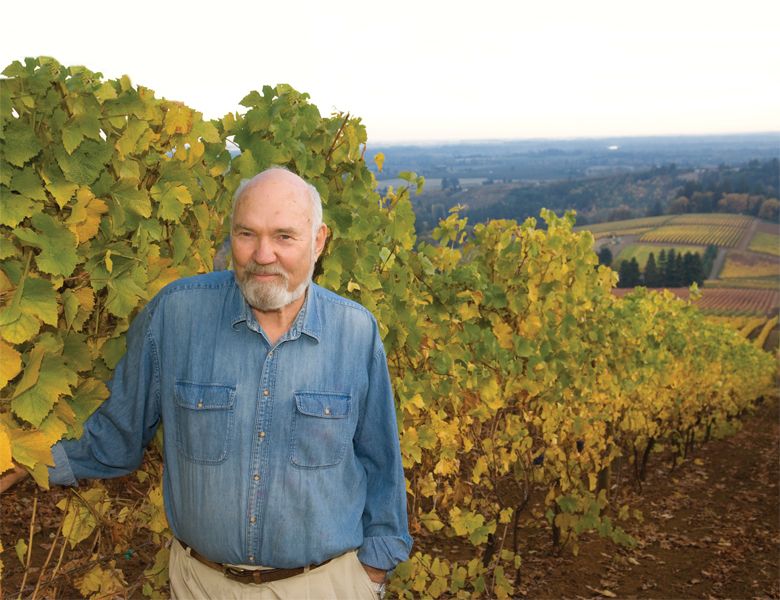
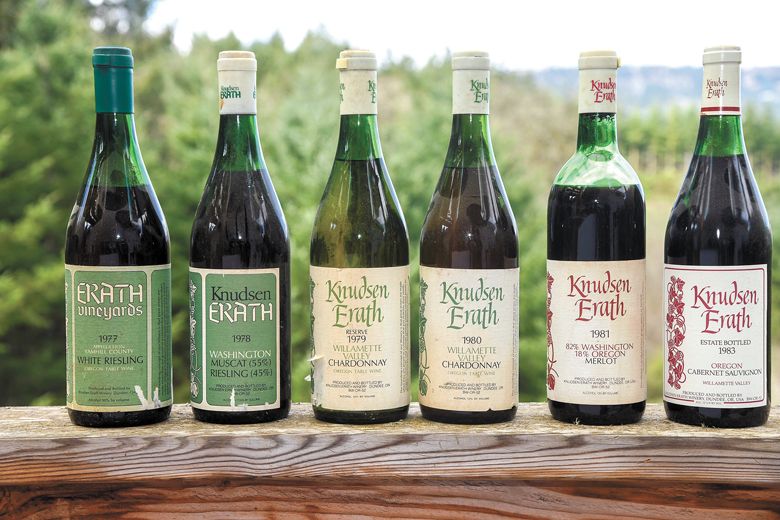
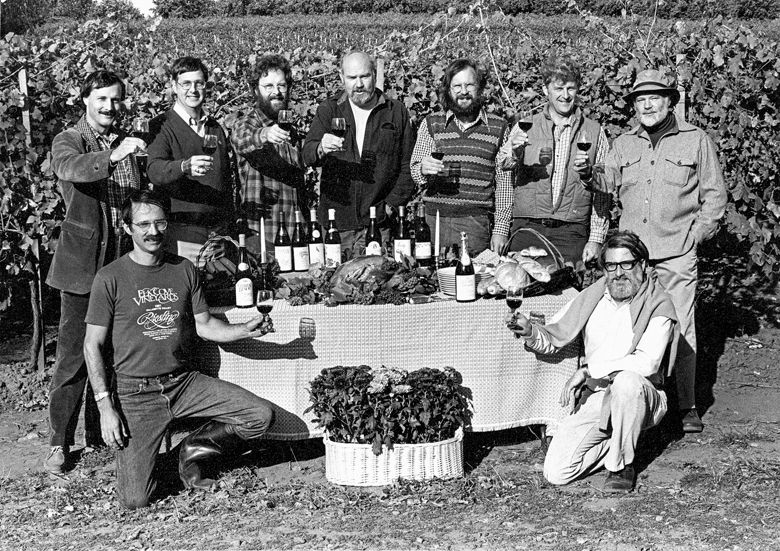
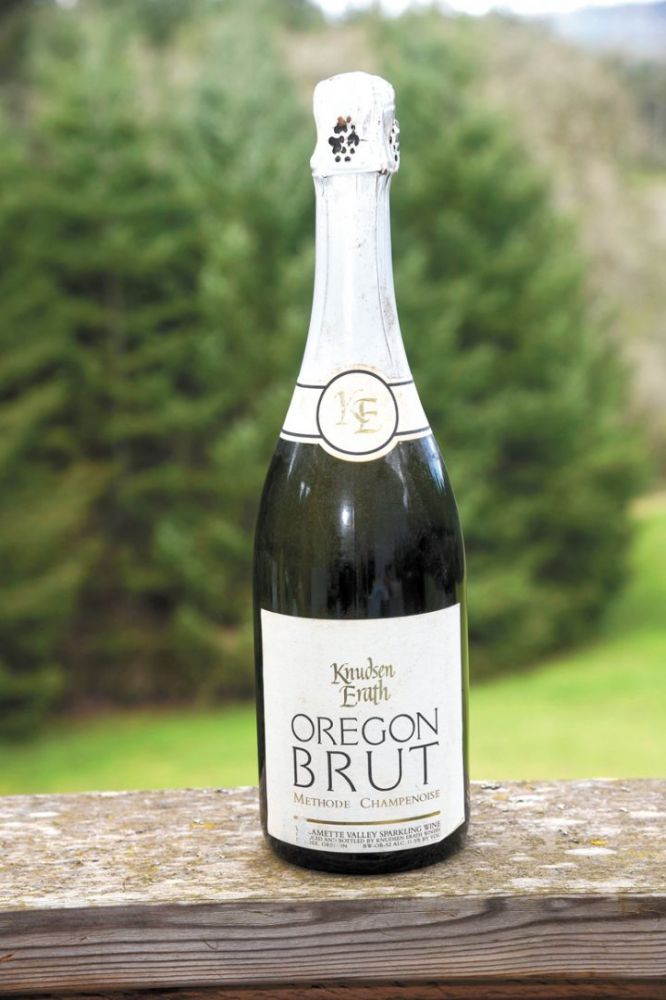
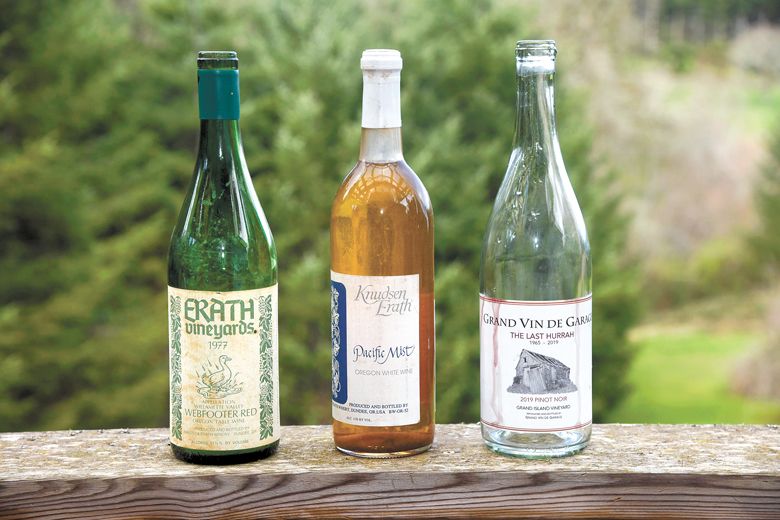
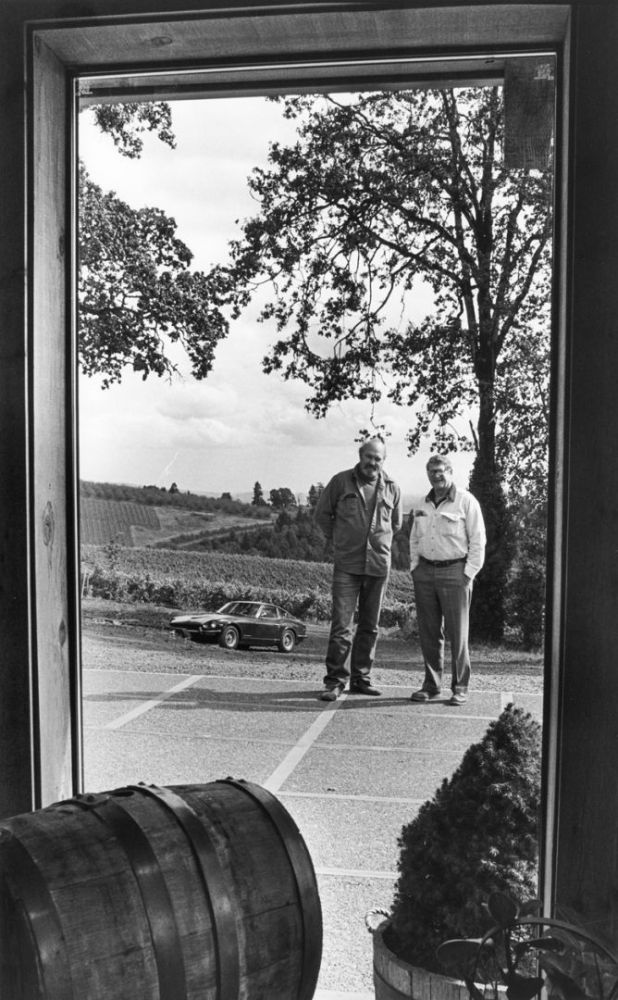
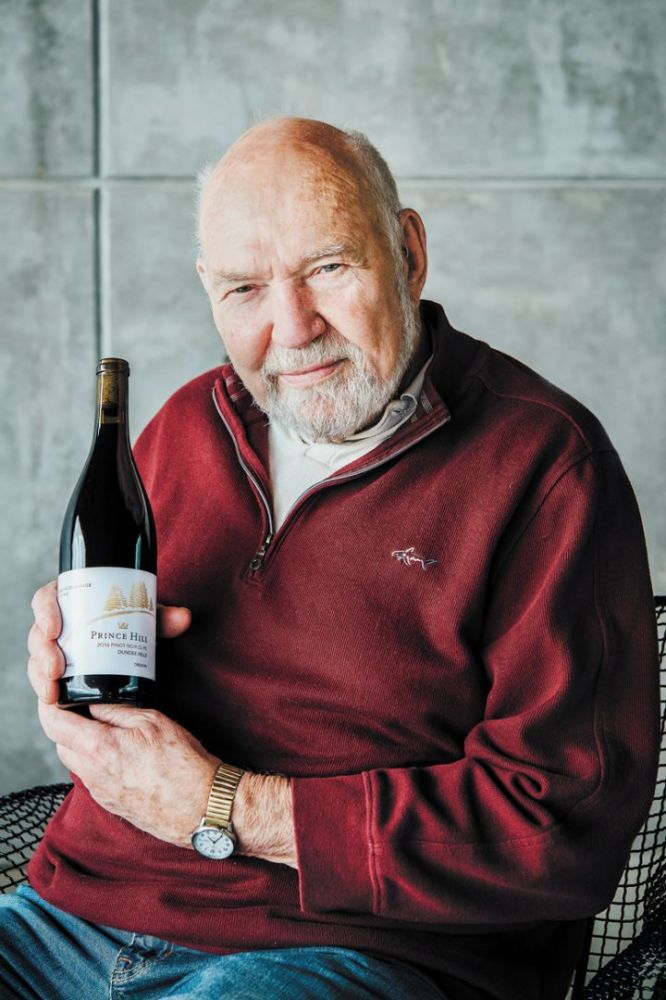
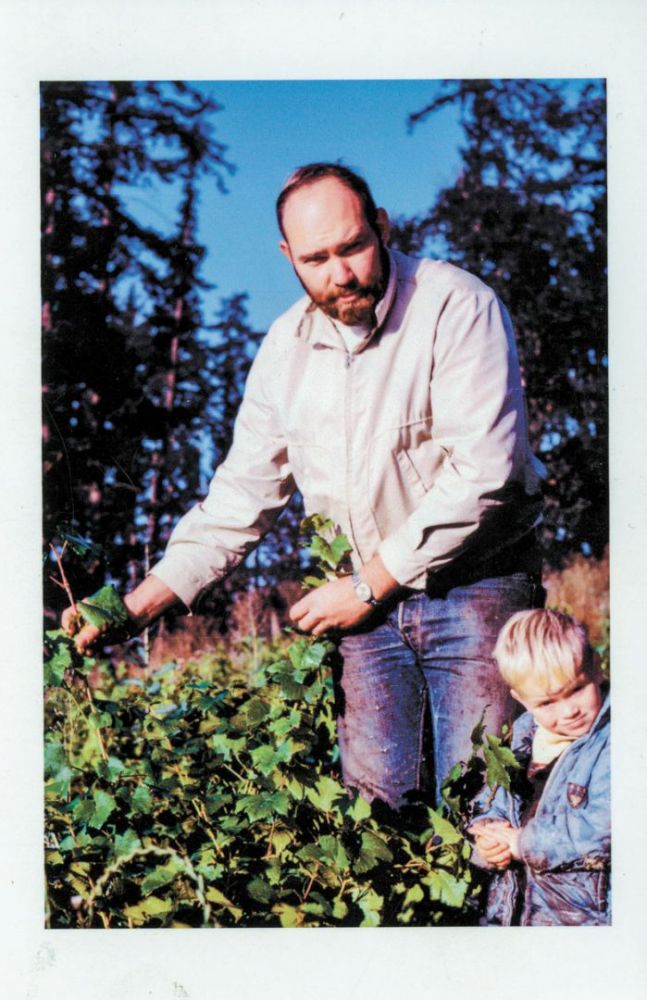
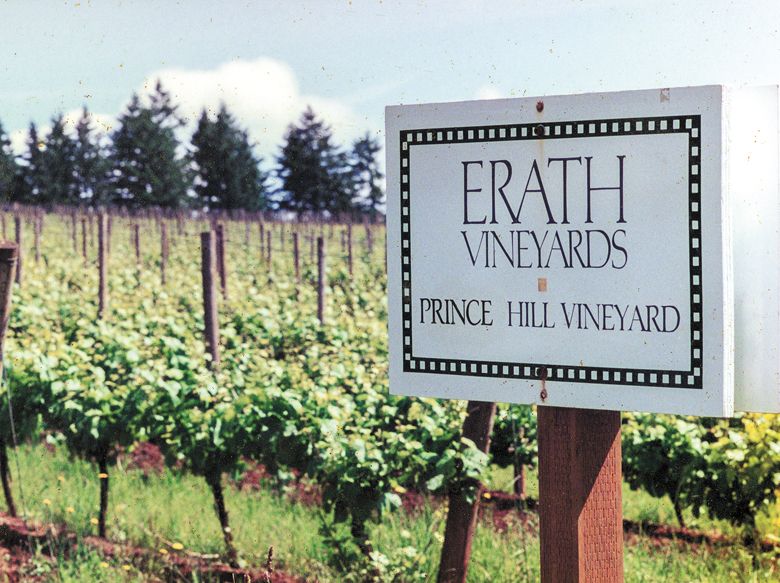
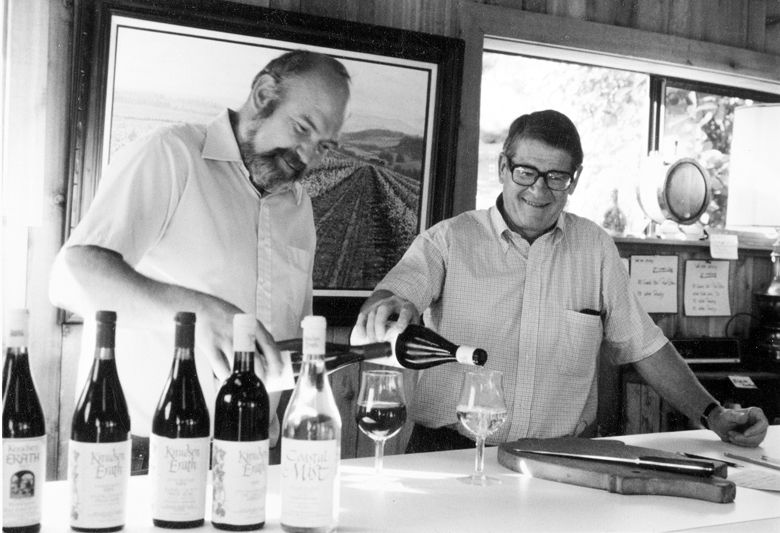
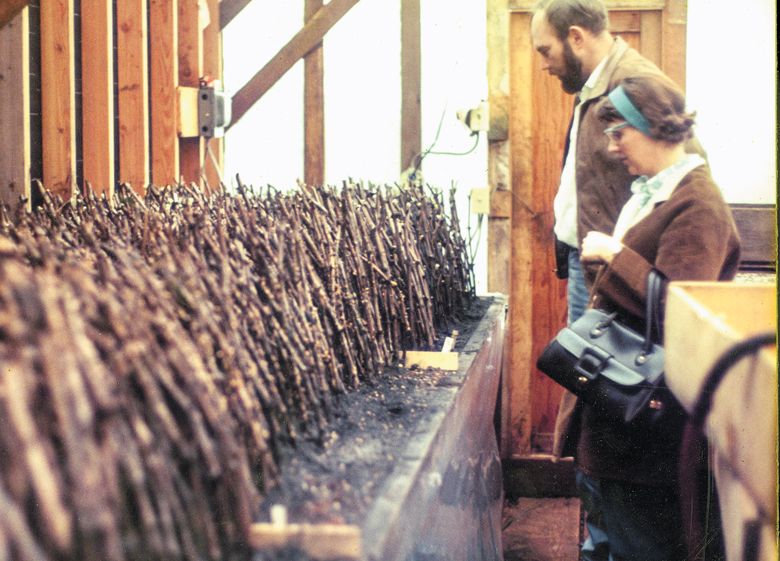
By Kerry McDaniel Boenisch
Oregon wine pioneer Dick Erath died March 29, following two weeks in the hospital. He was 87. A former engineer, Erath was first inspired to pursue winemaking in 1965 following an early garage experiment. After completing coursework at University of California, Davis, in 1968, Erath moved his family to the Dundee Hills. An old logger’s cabin on 49 acres would serve as home— and impromptu winery— for many years. The following spring, he planted the Dundee Hills’ first wine grapes, 23 varieties. Pinot Noir flourished. By 1972, Erath had produced his first commercial wine of 216 cases. Intrigued with French varieties, he soon became instrumental in importing French clones to Oregon. In 1976, Erath broke ground on the first winery in the Dundee Hills. In 2006, he sold the winery and brand to Ste. Michelle Wine Estates. He lived in Vancouver, Washington, with his wife, author C.J. David Erath. The Erath Family Foundation continues its contributions to the industry.
Prologue
I was seven years old when my parents, influenced greatly by David Lett, moved to the Dundee Hills. Our family then planted three vineyards simultaneously (not recommended for the faint of heart) and built a house on the largest tract. Torii Mor Winery now occupies the site.
For the first generation of growers in the early 1970s, the vineyards were largely named after our families; McDaniel, Weber, Fuqua and Maresh, among others. The most prominent, fearlessly leading the way for our fledgling neighborhood was all 6 foot 4 inches of the mighty Dick Erath. His first wine label, named Erath Vineyards, was created in 1972. By 1975, Dick, a Tektronix engineer from California, formed an iconic industry partnership with Cal and Julia Lee Knudsen, thus establishing the Knudsen Erath Winery.
By 1987, it was the biggest winery in Oregon and among the largest producers of Pinot Noir nationally. One year later, Dick purchased the Knudsens’ interest, reestablishing the Erath label once again. He became an industry pioneer yet again, when, in 2006, Chateau Ste. Michelle Winery purchased the winery for a record-breaking sum. But, I am getting ahead of myself.
At one time or another, nearly all the vineyard owners in our Dundee Hills neighborhood (and larger Willamette Valley region) sold their tonnage to Erath. Throughout the first generation of commercial growers in the 1970s and 1980s, I was a vineyard kid. My cohorts were Paige Fuqua, whose family planted Fuqua Vineyards, currently owned by Archery Summit; Jennifer Saucy of Saucy Vineyards, currently Furioso Vineyards, Jason Lett, son of David and Diana who established The Eyrie Vineyards; Alex Sokol-Blosser, son of Bill and Susan, who started Sokol-Blosser Winery; and Maria and Luisa Ponzi, whose parents planted Ponzi Vineyards. All of the kids planted, pruned, tied and harvested grapes. However, Cal and Erik Erath spent more time in the vineyard than the rest of us… Dick was relentless in his desire to develop and succeed.
Dick was a fixture in my earliest Dundee Hills memories— hosting harvest parties, selling cuttings from his nursery, helping with vineyard advice and driving his BMW 1600 splattered with red mud. He always seemed to be working at the vineyard and winery. Dick was a stalwart, semi-official leader who rallied the grapegrowers to keep going through pouring rain, deluged harvests and even falling Mount St. Helens ash.
The Dundee Hills neighborhood social events revolved around the original Erath home and vineyard, then owned by the Knudsen family. Dick was an imposing figure with a booming voice inherited from his father. We called him Opa. At potlucks, while the kids played kickball in the Crabtree Park field, Opa Erath liked to sing arias. Unfiltered wine, unsolicited grape-growing advice and debates also flowed freely.
These potlucks were the precedent to the “First Annual Oregon Grape Day,” held on May 10, 1975 and organized by the nascent Winegrowers Council of Oregon. Dick played an active part, hosting meetings at the Knudsen Erath Winery with a (now) legendary lineup featured in the day’s agenda. Note that lunch was only Oregon wines, with no mention of food…
1. Introduction - Dick Ponzi (Nancy Ponzi)
2. Site and Variety Selection - Chuck Coury (Shirley Coury)
3. Pest and Disease Control - Bill Blosser (Susan Sokol-Blosser)
4. Vineyard Economics - Gary Fuqua (Saundra Fuqua)
5. Oregon Extension Service - Ralph Garron
6. Pruning, Training and Trellising - David Adelsheim (Ginny Adelsheim)
7. Site Prep and Planning - Dick Erath (Kina Erath)
8. David Lett (Diana Lett) and Bill Fuller (Virginia Fuller) were present as well
Kina, Dick’s wife, though noticeably absent on the agenda (like the other wives I’ve added), was, nonetheless, vitally involved in the early grape growing ventures. Later, she took sales and marketing of the brands in the local, national and, eventually, international marketplace.
Dick Erath, David Lett, Charles Coury of Charles Coury Vineyards (now David Hill Winery) and Bill Fuller of Tualatin Estate all studied viticulture at U.C. Davis in the ’60s. They formed a competitive alliance and had heated conversations about the ideal, cool-climate growing locale for wine grapes. They also discussed early bottling and labeling laws with fervor. In 1976, Dan Berger, a Salem Statesman reporter, interviewed Erath. “We had a lot of ideas,” said Dick, “But no one agreed with anyone else about what was the best thing. Getting two winemakers to agree on anything is like trying to get 100 cats in a sack.”
Dick, very involved in early French and Alsatian rootstock experimentation, also sold his own rootstock, while simultaneously buying grapes for Knudsen-Erath Winery from many area winegrowers. In a September 1977 Erath Nursery newsletter, he advertising grape cutting stock: “dormant bare root plants, 50 cents each in bundles of 50.”
Dick was a family friend who often sat in our living room, drinking a glass of wine and participating in the ongoing grape growing debate. Once, he and Charles Coury had such a heated discussion they stepped outside to “fight it out.” My Dad’s firm insistence convinced the men to draw their poised fists back. Hearing the commotion, I looked down from my second story window, thinking, “oh, it’s just Dick and Chuck.”
I wrote my first book, Vineyard Memoirs, in 2004. In it, I recount growing up amidst the grapes and grape growers. Dick is at the forefront, buying our grapes, making wine and establishing the first tasting room in the Dundee Hills— thanks largely to his wife Kina and Martha Maresh. Martha shared that when she and Kina opened the garage door of the tasting room with a card table for a bar that first day, they wondered if anyone would show up. And show up they did.
Dick notably encouraged me to write my book, as his “The Boys Up North” had been published a few years prior and he “wanted company.” He came to every signing for all three of my books.
During my book interview process, Jim Maresh, Dick’s first grower, recalled the now famous story about Dick showing up on his doorstep. “In 1969, Dick Erath came up my driveway in an old BMW. He was kind of a formidable-looking guy with these papers under his arm and I wasn’t sure if I was going to let him in. He introduced himself and said he had looked all up and down the West Coast for a great viticultural site— and that I was sitting on it.”
Maresh agreed to give grape-growing a shot, and thus commenced a 50-plus-year friendship.
Dundee Hills, Geezer’s Club 2020
The Geezers Grape Growers is a self-named group of retired, first-generation commercial growers and lifelong friends. It’s comprised of Jon Davidson (aka “Geezer in waiting”) of Walnut City Wineworks; Gerry Koschal of Juliard Vineyard/Crumbled Rock Winery (initially Saucy Vineyards and now Furioso Vineyards); Jim Maresh of Maresh Vineyards; Vivian Weber (aka “Geezerette”) of Weber Vineyards; Gary Fuqua of Fuqua Vineyards and my parents Jim and Donna Jean McDaniel.
I was standing in the kitchen with Dick as he opened a bottle of 1977 “Webfooter Red” for the Geezers Grape Growers lunch. He popped the crumbly cork and poured the oxidized red blend, now rust brown, into wine glasses. The members sip and ponder for a minute, then start heckling the award-winning wine pioneer about his vintage’s lack of shelf life.
Erath good-naturedly rolled his eyes and told the story of how a dancing duck named Webfooter Red, graced the label of the last run of grapes in ‘77. He took pride in his entrepreneurial inventiveness as he recalled the early industry tale. “My son Erik was just starting University of Oregon at the time, so I decided to take the bottles down to the college and sell them out of the back of the truck in front of the bookstore. And it worked!”
Jim Maresh got a sentimental look in his eyes and started telling one of his famous vineyard lore stories about the first time he and Dick were crushing grapes together in 1970. The pair were dumping the clusters into the hand press. “Are you sure this is going to work? My banker doesn’t think it will,” questioned Jim. Years later, while at Erath’s 25th anniversary celebration, the men sat under a tree in the vineyard, looking at the vista and musing about the last two decades. Dick looked around and said, “Did you ever think that it would be this big? I mean sometimes we didn’t exactly know what we were doing.” Jim exclaimed, “Now you tell me that we didn’t know what we were doing? I assumed you knew!”
Dick had two sides that intersected, creating an authentic, iconic figure; his legendary professional drive to grow grapes and get Oregon wine into the national marketplace, coupled with an alter ego “make wine in his garage” persona. Pacific Mist, Coastal Mist, Hot Tub White and Webfooter Red were products of the latter. Knudsen Erath Chardonnay, Pinot Noir and even a sweet Riesling all emanated from the former. Not to mention a sparkling Oregon Chardonnay and Pinot Noir Brut Méthode Champenoise, both produced in 1979.
Dick was the main character in a second Geezers group, based in Portland, made up of people in the trade who first sold the Knudsen Erath brand, including the Strohecker family and Armand Martinotti of Martinotti’s Italian Deli. Fifty years later, they still meet for lunches. Dick’s Grand Vin De Garage Red is a tribute to those lifelong friendships.
Jim and Loie, Vivian and Arthur Weber along with Dick, all encouraged me to write our early stories. As the unofficial “Dundee Hills historian” scribe, not only have I been bequeathed a piece of the Tigard High School gym floor board from the Maresh’s Red Barn tasting room floor, but also mountains of memorabilia with yellowing pages. I now share memories in their honor— through some very emotional farewells over the last few years— to these luminous, first-generation Oregon wine industry giants.
The visions of these legendary characters still reverberate in my mind. I hear the sound of Dick’s deep baritone voice directing the crush crew; Kina Erath’s gentle voice greeting returning tasting room customers by name; David Lett’s eloquent orations delivered in hip boots; Arthur Weber’s life-of-the-party infectious laugh; Chuck Coury’s encyclopedic grape-growing climate fiery speeches spoken like a king to his constituents; Shirley Coury’s insightful comments at her gourmet dinner parties; Jim Maresh’s poetic stories spoken with a charming midwestern drawl, Loie Maresh’s equally charming laugh matching her charming personality; and my beloved father’s voice standing over my shoulder in the twilight of the vineyard telling me to finish tying the row before it gets dark - they will echo in not only my heart and soul but the greater Pacific Northwest wine industry forever. Gone but never forgotten; your legends live on in every Oregon vintage.
Bill Blosser, founder, Sokol Blosser Winery
When Susan and I first drove out of Portland in the fall of 1970 to look at vineyard land in Yamhill County, we stopped at a realty office in Newberg to look at available farm properties. The realtor told us that there was a guy up on Kings Grade Road, just out of Newberg, who had started a vineyard and that we should go talk to him. We immediately drove up there and met Dick and Kina Erath. They are living in an old ramshackle house next to the road. The yard was full of cuttings buried in bark dust. Dick was very welcoming and willingly shared everything he knew about the area and grape growing in Oregon. He shared with us one very important piece of information: a masters thesis that Chuck Coury had written at U.C. Davis that analyzed where would be the ideal place to grow Pinot Noir (and other Burgundian varieties) in the U.S. It pointed to the Willamette Valley as that ideal place. Talking with Dick and reading that thesis sealed our decision to focus our search for a vineyard site on the Willamette Valley, and specifically the Dundee/Newberg area. Dick also knew Dave Lett, and gave us his contact information. Dave and Chuck were the first two people since Prohibition to establish viniferea vineyards in the northern Willamette Valley, moving here after graduating from Davis in about 1965.
Dick was endlessly inventive and curious about everything. He did a lot of the original research into what would be the best trellis system and spacing for our grapes. He led the charge to ban the importation of rooted vines into Oregon in order to avoid the accidental introduction Phylloxera (it worked for twenty years, but eventually Phylloxera found its way here). When we were having difficulty getting enough cuttings to plant our vineyards, he asked me if I wanted to join with him to establish a greenhouse to root cuttings, which would decrease the waiting time for planting by a year or two. We ran the greenhouse for several years until enough field-grown cuttings became available.
Dick was never satisfied that we had the right clones of Pinot Noir to make the finest wines. He led the effort to bring in many clones of Pinot Noir from Burgundy. Unlike some others, he wanted to do it legally, so he developed a relationship with the U.S. Department of Agriculture research station at Davis to receive the cuttings and put them through a process to certify them as virus-free. The result was a large number of new clones available to growers, a number of which have proven to be producers of great wines: Pommard, the various Dijon Clones, etc.
Dick was a great chef, as a recent obituary noted. I remember one day going up to work at the greenhouse, and he said he would make us lunch. He whipped up a superb lunch in no time, and when it came to the table I couldn’t immediately recognize what it was. There was a plate full of small medallions of meat sautéed in herbs and butter. Robin breasts. Yep, he had been shooting the robins that used to descend on our vineyards in the fall and rather than leaving them to rot in the vineyard, had made them into lunch. They were delicious, by the way.
Jerry Murray, owner & winemaker, Project M Wines
I have often said that one of the great things about the Oregon Wine industry is that our legends still live among us. The pioneers of our industry have been with us as our Industry has grown, matured, and aged. I consider myself fortunate to have known, learned from, and been inspired by them.
My first experience with Dick Erath was making dinner for him while I was a sous chef at Fuego Restaurant and Bar in Tucson, Arizona, where Dick spent his winters. A bottle of 1994 Erath Leland Vineyard Pinot Noir that I found at a wine shop in Tucson was a critical experience that inspired my move to Oregon in 2000.
In May of 2001, I decided that cooking wouldn’t be my life’s work and set my sights on winemaking. I called up all of my favorite Oregon winemakers and asked if they needed any harvest help. Nearly all those conversations went like this: “Yes, we do need help at harvest,” they would answer, “Do you have any experience?” I would answer “no,” and they would all respond with “You should talk to Erath.” So, I did.
My first day at Erath was one week after the 9/11 attacks. Though the winemaking was in the very able hands of Rob Stuart and Tyson Crowley, Dick was constantly darting in and out with grape samples and vineyard updates. Dick loved the vineyard. He loved planting, farming, and walking them.
I saw in Dick, then in his late ‘60’s, a youthful restlessness. He was always thinking about another experiment or another project. In addition to his Oregon operation, he had planted a vineyard and built a small winery in Arizona.
My fondest memory of Dick was toward the end of the 2002 harvest. Every harvest has a day marking that the end draws near. It was a rather pleasant and sunny day in October. Most wines had been barreled down with just a few lots still fermenting. Michael Beckley, the winemaker, had given us a short to-do list and instructed us to “go home” when it was done. We were going to get to go home early.
I was checking lights had been turned off and doors shut when Dick appeared out of nowhere. He was holding a white five-gallon bucket with both hands like a giant cup. Wine stained the gray beard on his chin. He pushed the bucket towards me and told me to “taste this.” I drew the bucket to my lips and tasted it. I swished the wine and spat it into the drain. “What do you think,” he asked. “It tastes like we should probably press that tomorrow,” I replied. With a grin, Dick replied, “I’m thinking now.”
I saw the last guy sneaking out of the cellar, trying to avoid being pulled into another three hours of work. I motioned for him to leave.
Dick and I, together, dumped the tank into the press and stood there tasting the free run looking for the point to make the press cut. Once the press was done, Dick asked if it was ok if he left.
Over the next hour, as I cleaned up alone, my thoughts didn’t dwell on the half day that had turned long or that I was the only one that stuck around to do the press and clean up. Instead, I felt I had just had a “grandpa” moment with a living legend. Though I am grateful for all my time with Dick, I am particularly thankful for that day.
For Dick Erath, RIP just won’t do. But, I do not doubt that if there is a heaven, Dick Erath is there. His eyes fixed on some beautiful south-facing slope, pondering what grape should be planted on it.
David and Jeanne Beck, winegrowers, Crawford Beck Vineyard
It was a cold and rainy day in March, 2006. Jeanne and I could do nothing in the vineyard that day, so we decided to explore our new community. We found ourselves at Martha’s Tacos in Lafayette for a late lunch.
We were at a table and there was only one other person eating, a tall gentleman at the table next to ours. I suppose he heard us talking about the vineyard or a place that we had been tasting, or whatever, but he came around to our table, introduced himself, and began a conversation. We explained that we had just purchased a 10-year-old vineyard in Amity and were anxious about our sprayer, our clients, and what we did not know.
Dick Erath was soft-spoken, gently encouraging, and did not say what fools we probably seemed to be at that time. Jeanne and I never had extensive occasions to see Dick in the 18 years since then, but whenever we did, he always remembered us by name and was genuinely interested when he asked how the vineyard was doing.
Since that first occasion, he won our hearts, and we treasure the memory.
Ernie Pink and Dena Drews, founders, Amalie Robert Estate
Dick Erath was one of the first to plant vines in what would become the Willamette Valley AVA. We first met Dick at a ¡Salud! Pinot Noir auction in the 1990s; that was our segue into the Oregon wine industry. We would go on to work together on a few things over the years. Our very first commercial wine was made by Dick and his cellar master Gary Horner— the 2003 vintage Dijon Clones Pinot Noir— all 72 cases worth. Bear in mind, Erath Winery was turning out tens of thousands of cases of wine. Paying attention to a 75-case lot of wine was a lot more than just a little inconvenient. But Dick committed to doing it, and with the unflappable hand of Mr. Horner in the cellar, he did it and did it well.
Dick Erath was instrumental in our Syrah program. After the cherry trees were removed from the property and before we planted any vines, Dick came to assess the vineyard site. It is worth mentioning Dick had been to the property many years before and had asked the previous owner if he could plant a few test vines. Dick was a “STEM” guy, before it was cool.
It was a very blustery March of 2000 when Dick and Ernie went to walk the field. They stopped at a crest, and Ernie mentioned this would be where he would plant his Syrah vines. Dick surveyed the area, firmly holding his hat to his head, and said, “I would plant it down there. Do you see where those trees are not moving in the wind? It will be more protected and warmer there to ripen Syrah. Not that you will actually ripen Syrah, but you will have a better chance.” And with that little bit of inspiration, Ernie did just that.
Dick Erath was our conspiring winemaker for 2013 Pabuk’s Gift Late Harvest Botrytis Chardonnay. It is said that anyone can call the gods, the question is—who will they answer? In 2013, Ernie called Dick, and he answered. That year Typhoon Pabuk gifted us nine inches of rain in four days, just before harvest. While everything held pretty well through the rains, the Chardonnay did not, and began to rot forthwith. We took what we could and left about two thirds of it on the vine.
About a month later, after ideal Sauternes conditions, Ernie went back to see if he could learn anything— like how to be a better winegrower. What he found was the raw materials for what would become a once in a lifetime wine, but how to do it? Sure enough, Dick made a November trip to the vineyard and gave Ernie some winemaking pointers. It is a rare occurrence when the dog that catches the car actually figures out what to do. Ernie later traded a few of these precious bottles for Dick’s own clone of Pinot Noir Erath Clone 95.
And then there were the post-harvest dinners. The vintages changed, but the menu stayed the same: duck and chanterelles with Dick and good friends.
There is literally a lifetime of stories about Dick Erath. His legacy will endure.
Susan Sokol Blosser, Sokol Blosser Winery founder and garden advisor
I think of Dick Erath as the head of our team— the handful of young couples embarking on the adventure of planting European grapes in Oregon. He was the head because he was always there for advice, willing to share what he was doing. And he was always trying something new to see if it worked.
He and Bill had a special relationship. Dick called Bill “Willy,” and took him under his wing, even though Dick was only a few years older.
More than anyone else, Dick was the glue that held us all together.
Greg Jones, Ph.D., CEO, Abacela Winery
Dick Erath will long be remembered for his contributions to the Oregon wine industry through the Erath Family Foundation. Many years ago, Dick invited me to sit on his foundation board. He told me about his ideas for supporting research and education, and immediately I felt honored to serve on the board and help carry out his vision. From his pioneering efforts of planting vines, to helping others succeed in the industry, to establishing his foundation, Dick Erath will continue to be an important part of the Oregon wine industry for many years to come.
Don, Wendy and Jesse Lange, Lange Winery
The first time I spoke to Erath was early in 1987. I had discovered a bottle of his wine, the 1979 Knudsen-Erath Maresh Vineyard Pinot Noir, in a little wine shop on the Mesa in Santa Barbara. (nota bene: Yes, Erath was the first Oregon winemaker to bottle a vineyard designate Pinot Noir). Wendy and I finished the bottle and thought it was great, more like fine Burgundy than any other domestic Pinot Noir we had tasted. We were seriously considering starting a winery at the time and since Pinot Noir was our favorite varietal this discovery was an epiphany. Wendy pointed to the back label and said, “Look. Here’s the phone number, call him up!” So, I did. He came to the phone, we talked wine and grapes for an hour, and he implored us to come and visit. We did precisely that and soon bought a 30-acre parcel within walking distance of Knudsen-Erath.
When we arrived with a 2-ton horizontal basket press in the back of our U-Haul truck, and no means for unloading it, I called him again, this time from our new home in the Dundee Hills. He said he didn’t have a tractor with a loader on, but his friend down the road, Art Weber, did. Within a few minutes, Art was at our property with his old John Deere; we unloaded the press and Art drove off with a wave in a cloud of dust and diesel smoke.
Over the years, we got to know Dick quite well. His laugh. His sense of humor, sometimes wry, sometimes sardonic. He called his old grey VW (was it a Jetta?) Rolly-Poly—because he ran it off the road and tumbled into Harvey Creek canyon. Dick was unhurt and when they got Rolly-Poly back on the road, he got in and drove home. I had the temerity to ride with him once and noted that the floorboard was covered a few inches thick with peanut shells. Literally. He loved to eat peanuts while driving— apparently, we joked, more than he loved driving straight.
He built a lovely home on his Prince Hill Vineyard where we would eat dinner, drink wine, and then go out on the lawn and drive golf balls at the water tower. And who could forget Chateau Plastique, Dick’s mobile home, man cave, ham radio den? He was fun to tease and he gave as good as he got, laughing in his inimitable way, which was more like a hearty giggle, tee-he-he, which is really funny because, if you knew him, he was too big to giggle (6’4”)… larger than life, some might say.
The man, his vision and his wine, illuminated our path to this incredible life--our winery, our vineyard, and our Oregon wine industry. Literally, we would not be here without him.
Alex Sokol Blosser, President, Sokol Blosser Winery
My last time talking to Dick was the summer of 2021, and we were looking at buying a piece of vineyard property that Dick once owned and farmed. I called him to get his two cents and he was extremely helpful (as always). Bright and jovial is always how I remember him. His son Cal was someone I saw throughout my life, and he reminded me of his dad. Looked like him too.
Nathan Graves, Portland area chapter director of the American Wine Society
I knew Dick from the "Good Old Boys" and the "Virgo Nation" groups, both of which were favorites of Dick's. He was kind of a father figure for me; I loved his kindness and his keen wit. Dick was a big man with a big personality and a big heart. He helped many in the wine industry get their start, and he gave back generously through donating to charitable causes, and through his charitable foundation. I've spent the last several months donating vintage wines for him to various charities. The Erath Family Foundation supports opportunities to advance science and education in enology and viticulture.
Dick Ponzi, founder, Ponzi Vineyards
In the early 1970 I received a call from Dick as I was “chasing the fox out of our chicken coop”. This was the story Dick related when asked how we first met. The reason for the call he heard someone over the hill from Dundee was planting a vineyard. At that time Dick was involved with a nursery operation with Charles Coury and was merely soliciting a sale for grape plants.
That phone call was a beginning of a 53-year adventurous relationship. I soon realized that Dick was someone who really enjoyed many other challenging activities other than winemaking. He was an engineer, photographer, radio ham operator and poker player… above these, he loved to cook and experiment with anything involving viticulture.
I can recall to the latter two.
On a trip to Italy with his wife at the time Joan and my wife Nancy we had heard of a butcher in Tuscany, who had a reputation for the world’s best marinated chicken. After pleading with the butcher, he relented to selling us the chicken but we had to wait several days for his mastery preparation. We returned to procure the creation and Dick commented, not to the butcher of course, how it was the most unexpected expensive chicken. To display Dick’s thrift and talent the four of us shared that chicken for three days many different ways finally ending with pasta and chicken soup.
On the other talent, Dick established a greenhouse in the mid-80s where he could experiment with various grape plant materials. I had a grape variety that I wanted to propagate for a small plot in our vineyard but had a single cutting in a 5-gallon bucket. I challenged Dick to propagate from one cane enough plants to plant that same year. Dick created 500 greenwood plants from that one cane…an amazing feat.
The support and contributions Dick imparted to the growth of the Oregon Wine industry will always be remembered.
David Adelsheim, founder, Adelsheim Vineyard
One thing I’ve realized is that he was really the first person in the Willamette Valley to consider making “a lot of wine.” He had a couple of big vineyards he owned or managed and he bought quality grapes everywhere he could find them. Knudsen Erath and especially Erath Vineyards made Pinot noir for the normal consumer, not the collector. Don’t misunderstand me. His wines were not dumbed down; they were delicious. He just made lots of cases. He crafted a few wines for collectors, too. But his real gift, first to Oregonians— and eventually to the whole country— was wonderful Willamette Valley Pinot noir. It was, in many ways, his brand that established Willamette Valley, Oregon and Pinot Noir as conjoined in the minds of many American wine lovers.
The second thing he demonstrated was that one could make money in the Willamette Valley wine business. He worked closely with the accountant Jack Irvine, who helped him understand what it would take to become a profitable business. And he was the first to sell his business, not because he had to but because he had built it as far as his capital could take it. He sold Erath Vineyards to Ste. Michelle Wine Estates, making a lot of money because it was such a viable brand. (He used some of that money to continue planting his Prince Hill Vineyard property in the Dundee Hills, eventually selling it to Silver Oak.)
Three, he used money from the winery sale to set up the Erath Family Foundation, which has funded 501(c)(3) charitable organizations associated with the industry, and beyond. No one else in Oregon has done anything like that.
And four, he was a great guy. He was, literally, the first person we met in the Oregon wine industry. Actually, in any wine industry. He was always friendly, curious, encouraging, mentoring (he probably wouldn’t have used that word, though) and often visionary. He understood how important collaboration was to our industry. And, he was always ready to taste yet another wine.
I will personally miss knowing that I could always send an email with some arcane question about the industry in 1970s, and pretty quickly, Dick would get back to me.
Dick lived a long life and had a profound effect on many, in our industry and beyond. We’ve lost the third monumental figure in the founding of our industry. And, in many ways, the most successful.
Page, Cal, Colin and David Knudsen, Second generation stewards, Knudsen Vineyards
In those years, there was no playbook for what grapes to grow and how best to establish a vineyard in Oregon. Dick brought his natural curiosity about how things grew and worked (he fixed TV’s during high school to earn pocket money) to the study and practice of growing grapes. Which clones would most likely prosper in Oregon, how far apart should the rows be set and the vines planted, what was the optimal trellis system— these and many more decisions needed to be made as planting commenced at Knudsen Vineyards. Every decision was untested and unproven. This was the beginning of the Oregon wine industry. Over time and with the benefit of shared learning experiences and collaboration with colleagues, best practices became more established. Knudsen Vineyards innovated, its methods evolved with each new planting, adapting new French Dijon clones, creating (or experimenting with) tighter spacing of rows and vines, adopting vertical trellising and more.
It takes three years, and sometimes longer, for Vitis vinifera vines to mature and produce harvestable grapes. In 1975, Knudsen Vineyards produced its first commercial crop from 24 planted acres. Our parents, Julia Lee and Cal Knudsen, hosted the first Knudsen Vineyards Harvest Party to celebrate, an annual tradition that extended for many years. That same year, Cal and Dick formed Knudsen Erath Winery to make and sell wine from the first grape crop and also from grapes grown at Dick’s vineyard. Knudsen Erath Winery was the first commercial-scale bonded winery, Oregon Bonded Winery No. 52, in the Dundee Hills. Knudsen Vineyards placed another 25 acres into service in 1976 and six more in 1977. In addition, in 1976 the Knudsen Erath tasting room opened, fueling the growth of Knudsen Erath Winery.
“I think we were a great fit because I had the technical side— and he (Cal Knudsen) had the business side and I learned so much about business practices from him and how to run a business. Basically, I really appreciated that time and what I learned by working with him. He was a great mentor…” —spoken by Dick Erath during a 2021 interview.
Rich Schmidt, Director of Archives and Resource Sharing, Oregon Wine History Archive, Linfield University
Archives aren’t about legends. They’re not about rockstars, superstars, shooting stars or falling stars. They’re not about hagiography.
Archives are about the records of our lives. The day-to-day materials we create and compile that show our growth and evolution as people, as organizations, as businesses, as families. The beautiful and the ugly, the success and the challenge, the epiphany and the tragedy. Spend enough time with an archival collection and you will get to know people in an entirely different way. Primary, primal history, from the photographs, journals, letters, and other things we choose to create, collect, and preserve.
Dick Erath understood this better than most. Dick was, by all accounts, a legend. But he was also a person, which means he was complex and complicated. He was driven, passionate, relentless; a visionary. His archives collection tells the fullest possible story. It shows the passion to create wine coupled with the need to run a business, the perpetual need to grow coupled with the challenges of time and space. It also shows a personality that caused conflict in business and personal relations. It shows a human.
Dick donated his collection, warts and all. He understood the importance of his history. He supported Linfield in a number of ways; he loved meeting our students, asking them about their wine passions. He loved calling us when he found an interesting bottle in his garage, or a box of labels in his barn. We looked forward to our interactions, seeing what he had built, and hosting him as he proudly looked at all the archival boxes with his name on them. It’s impossible to overstate our gratitude that he trusted his life’s work to us.
His influence on the Oregon wine industry is unquestionable, as is his status as a legend. But archives aren’t about legends. They’re about humans. And that’s what we’ll miss: his friendship, his support, his humor, his humanity.
Our deepest condolences go out to his family, his friends, and the myriad people he influenced, mentored, challenged, welcomed, and supported. As long as there is an Oregon wine industry, Dick Erath’s fingerprints will be on it, as will the twinkle in his eye.
An excerpt from an Oregon Wine Press May 2021 interview
What would you like to be most remembered for?
“That I tried to make a contribution to the industry. I’ve always felt I was fairly lucky; I mean, I was in a situation where I came to an area and started an industry where there wasn’t one before. How many people can say that? … We had an opportunity to create a new viticultural area in the world. It’s very satisfying, and I hope I could be remembered as being a part of that.”— Dick Erath












